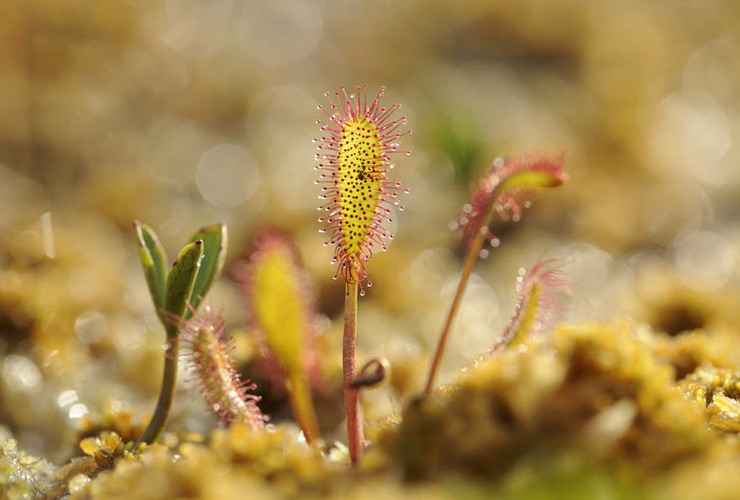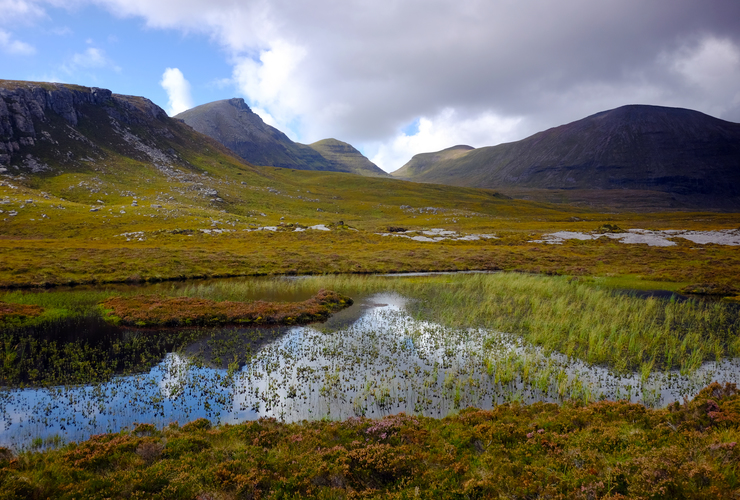After the flood
On this International Day for Disaster Risk Reduction, Heather Graham reports on how the Trust is working with partners to utilise nature in preventing natural disasters near Helvellyn.

The UK is seven per cent wetter than it was 40 years ago, so it is not surprising that severe flooding events have been on the rise. However, it isn’t just climate change which has increased the risk of such events; environmental degradation and poor land management have reduced nature's resilience to extreme weather.
For example, Glenridding near Helvellyn in England’s Lake District experienced unprecedented levels of rainfall that resulted in severe flooding events back in 2015. At Thirlmere below Helvellyn, 405mm of rainfall was recorded over a 36hr period, surpassing previous rainfall records for the UK. Damage to the water pumping station in Haweswater meant the army had to help supply bottled water to Glenridding’s residents.
The combination of the heavy flooding and subsequent landslides down the valley also caused major infrastructure damage with thousands of tonnes of silt, gravel and stone being carried down the fells resulting in crucial roads being ripped up and blocked. Glenridding was cut off for three days, with no phone lines, no mains water, limited access in and out of the village and very intermittent power supply.
Following the Glenridding floods of 2015, the community banded together to identify how to better use and manage the landscape to slow the flow of water and reduce peak river levels. They used a variety of land management techniques such as soil aeration, bunds, leaky dams, woodland creation and river restoration to absorb excess water and reduce the flow levels.
At least 350 hectares of high priority peatland is being restored to absorb water and natural flood storage areas are being created upstream of Glenridding, along with utilising agri-environmental schemes, to help support flood management.
Effective nature restoration
Determined to continue this work, the John Muir Trust joined the Thirlmere Resilience Partnership in 2020, working alongside United Utilities, Cumbria Wildlife Trust and Natural England. Our aim is to utilise large-scale land management to restore ecosystems, regenerate peatlands and develop a catchment capable of supporting both environmental targets and guaranteeing water supplies for the area. This collaborative approach encourages data on weather, water quality, soils and erosion potential, and vegetation and habitat quality to be shared, allowing for a broader understanding of the needs of the area and to help identify the right mechanisms for delivery.
The partnership uses a variety of nature-based solutions to help achieve the following goals:
- secure a long-term, reliable supply of good quality raw water
- retain water in the catchment and slow the flow of water to reduce the impacts of flooding and drought
- stabilise soil and prevent landslips to minimise soil erosion and pollution
- support a sustainable upland economy and resilient farming businesses
- restore forest tracks, culverts and footpaths using natural materials
- create self-sustaining mixed woodland, providing biodiversity and carbon sequestration
- restore upland peat, and wet and dry heath lands
- improve biodiversity, disease resilience and soil health
- halt the decline in carbon carrying capacity and reverse the emission of CO2 from upland areas
- improve the status of designated sites, such as the Lake District National Park
- enhance recreation, improve footpaths and public rights of way.
Effective nature restoration is one of the key methods of improving the resilience of the area and achieving these goals. This ‘natural flood management’ may not completely eliminate the need for manmade flood defences, but it is a vital tool to help protect land and surrounding properties from damage.
Making a difference
With all of these factors in mind, it is imperative that we take natural flood prevention seriously and continue our efforts to reduce the risk of future damage to our wild places from natural disasters. So far, through our work with the Thirlmere Resilience Partnership, the John Muir Trust has assisted in the planting of approximately 3,800 trees within the valley around Helvellyn, creating a more resilient catchment for water quality and improving the local biodiversity. We will continue to nurture these trees to ensure that they can contribute to flood prevention efforts for the area.
Looking to the future, our aims are to continue to increase native tree cover, bring back areas of montane woodland (an underrepresented habitat in the lakes), implement a monitoring programme to track progress, create a tree nursery, and better connect people to the land through exciting new volunteering opportunities and school visits.
This kind of work isn’t possible without our wonderful team of staff, dedicated volunteers and generous support of Members and supporters of the John Muir Trust.
- Find out more about our work near Helvellyn here: Helvellyn (johnmuirtrust.org)


